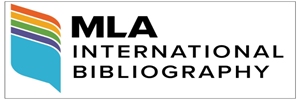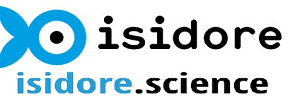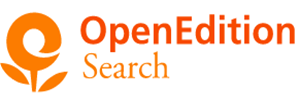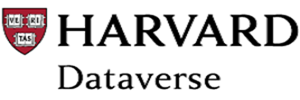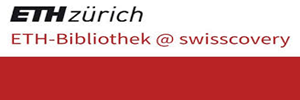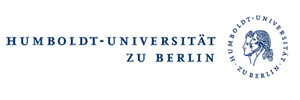Title: Comparative Analysis of the Selected Speeches by Muhammad Ali Jinnah and Mohandas Karamch and Gandhion the Basis of Politeness Strategies
Farman Haider
Abasyn University Islamabad Campus, Pakistan
Abstract
This research is based on a comparative analysis of the selected speeches delivered by Muhammad Ali Jinnah and Mohandas Karamch and Gandhi based on politeness strategies. Both speakers were analyzed based on four politeness strategies that are bald on-record, negative politeness, positive politeness, and off-records. This study looks at the politeness strategies used by ‘Quaid-e-Azam Muhammad Ali Jinnah’ and ‘Mohandas Karamch and Gandhi’ on a comparative basis. Four speeches have been selected for the analysis; two from Jinnah and two from Gandhi. According to the findings, both speakers used four types of Brown and Levinson’s (1987) strategies: bald on record, positive politeness, negative politeness, and off record. A total of 122 utterances were opted from the speeches of both speakers; 80 from Jinnah and 42 from Gandhi. In particular, Jinnah employs the bald-on- record strategy 45 times or 56.25%. Positive politeness 20 times (25%), negative 10 times (12.5%), and off record five times (6.25%) Gandhi employs the bald on record strategy 3 times or 7.14%. Positive politeness 27 times (64.28%), negative politeness 11 times (26.19%), and off record once (2.38%). Jinnah’s most common politeness strategy is Bald, while Gandhi uses positive politeness the most in his speeches. Negative politeness has been employed more by Gandhi and Off Record by Jinnah. Bald on category is more direct and uses utterances without keeping face-saving, but positive and Negative politeness save the face of the listeners.
Keywords:
Bald on Record, Negative Politeness, Off Record, Politeness, Positive Politeness
How to Cite this Paper:
Farman, H. (2023). Comparative Analysis of the Selected Speeches by Muhammad Ali Jinnah and Mohandas Karamch and Gandhion the Basis of Politeness Strategies. Atras Journal, 4(2), 201-220
References
Andrew, F. F, A., & Godfrey, M. (2004).An evaluation tool to assess the quality of qualitative research studies. International Journal of Social Research Methodology,7(2), 181-196
Anwar, N. M.,Ullah, R., Ahmad,N., &Ali, M.(2015).Critical Discourse Analysis of Quaid-e-Azam, M. A. J. (11th August, 1947). Speech in the first Constituent Assembly of Pakistan. A Research Journal of South Asian Studies, 30(1), 159-173.
Barnabas, A., Clifford, S, P. (2012). Mahatma Gandgy – An Indian Modelof Servent Leadership. International Journal of Leadership Studies,7(2), 132-150
Beatty, M. J., Ralph R. B., & Banks, B. J. (1979) Elements of dialogic communication in Gandhi’s second round table conference address. Southern Speech Communication Journal, 44(4), 386-398.
Boyd, M. S.(2009). De-constructing race and identity in US presidential discourse: Barack. 31(2), 75-94, AEDEAN
Brown, P., & Stephen, L. (1987). Politeness: Some Universals in Language Use. Cambridge: Cambridge University Press.
David, M. K., & Dumanig, F. A. (2011.). NATIONAL UNITY IN MULTI-ETHNICMALAYSIA: A CRITICAL DISCOURSE ANALYSIS OF TUN DR. MAHATHIR’S POLITICAL SPEECHES. Language, Discourse, Society.Https://www.researchgate.net/publication/281405123_NATIONAL_UNITY _IN_MULTIETHNIC_MALAYSIA_A_CRITICAL_DISCOURSE_ANALYSIS_O F_TUN_DR_MAHATHIR’S_POLITICAL_SPEECHES
Denzin, N. K., &Yvonna, S. L.(2005). Introduction. The discipline and practice of qualitative research. In K. D. Norman & S. L. Yvonna (eds.), The Sage Handbook of qualitative research (pp. 27-35).Thousand Oaks: SAGE Publications
Getkham, K.(2014). Politeness Strategies in Thai Graduate Research Paper Discussions: Implications for Second/Foreign Language Academic Writing. English Language Teaching, 7(11),159-167
Gil-Salom, L., & Soler-Monreal, C. (2009).Interacting with the reader: Politeness strategies in engineering research article discussions. Journal of English Studies, 9, 17-189.
Goffman, E.(1955).Onface-work: An analysis of ritual elements in social interaction. Psychiatry,18, 213–231.
HAYDON, D. et al.(1977). The molecular mechanism so fanaesthesia. Nature, 356–358. https://doi.org/10.1038/268356a0
Horváth , J.(2011).Critical discourse analysis of Obama’s political discourse. Retrieved from http://www.pulib.sk/elpub2/FF/Ferencik2/pdf_doc/6.pd
Hyland, K.(2000). Disciplinary Discourses: Social interaction in academic writing. London: Longman.
Hyland, K.(2001).Humble servants of the discipline? Self-mention in research articles. English for Specific Purposes, 20(3), 207-226.
Hyland, K.(2002).Directives: Argument and Engagement in Academic Writing. Applied Linguistics, 23(2),215-239.
Hyland, K.(2005). Stance and engagement: A model of interaction in academic discourse. Discourse Studies, 7(2), 173-192.
Hyland, K., &Tse, P.(2004). Metadiscourse in Academic Writing: A Reappraisal. Applied Linguistics, 25(2),156–77
Hyland, K., &Tse, P.(2005).Hooking the reader: A corpus study of evaluative that in abstracts. English for Specific Purposes, 24(2),123-139.
Jonathan‘s declaration of interest in the PDP presidential primaries. Language, Discourse and Society, 1(1), 32-54.
Jovanović, G. (2011).Toward a social history of qualitative research. History of the Human Sciences, 24 (2), 1–2
Kádár, D. Z.(2017). Pragmatics and politeness. Oxford Research Encyclopedia of Linguistics.
Lakoff, R. (1973). The logic of politeness: or minding your p’s and q’s. In Papers from the Ninth Regional Meeting of the Chicago Linguistics Society(pp. 292—305).
Leech, G. (1983).Principles of pragmatics. London and NewYork: Longman.
Long, A.F., Godfrey, M., Randall, T., Grant, M.J., & Chapman, M. (2002).Developing Evidence Based Social Care Policy and Practice. Final Report: Part2: Effectiveness and Outcomes of Preventive Services for Older People: Risk Factors, Coping Strategies and Outcomes of Interventions in Bereavement (Salford and Leeds: Health Care Practice R& D Unit, University of Salford, and Nuffield Institute for Health, University of Leeds).
Martinez, I.(2001).Impersonality in the research article as revealed by analysis of the transitivity structure. English for Specific Purposes,20(3),227-247. Maurice Blanchot (2012). Mahatma Gandhi. Journal for Cultural Research,16(4), 366-370
Mills, S.(2011).Discursive approaches to politeness and impoliteness. In Linguistic Politeness Research Group (Ed.), Discursive approaches to politeness (pp. 19–56). Berlin: DeGruyter Mouton.
Myers, G. (1989). The pragmatics of politeness in scientific articles. Applied linguistics,10(1), 1-35.
Newton, P. M., & Levinson, D. J. (1973). The work group within the organization: A socio-psychological approach. Psychiatry: Journal for the Study of Interpersonal Processes, 36(2),115–142
Pilegaard, M. (1997). Politeness in written business discourse: A text-linguistic perspective on requests. Journal of Pragmatics, 28(2), 223-244.
Reiter, R. M. (2000). Politeness in Britain and Uruguay: A Contrastive Study of Requests and Apologies. John Benjamins B.V.
Sadiyah, K. (2015). Positive Politeness Strategies Used by the Main Character in the Theory of Selfia, M., & Marlina, L.(1987).An analysis of politeness strategies used by deddy corbuzier in Hitam Putih talk show. Society, 1(1),11-3.
Searle, J. R. (1975). A Taxonomy of Illocutionary Acts. University of Minnesota Press, Minneapolis.
Swales, J.M. (1995). The role of the textbook in EAP writing research. English for Specific Purposes, 14(1),3-18.
Ulfa, N.(2019). Politeness Strategies and Cooperation Principle in ‘Wonder’Movie. International Journal of Innovation Education and Research. International Educative Research Foundation and Publisher, 7(7), 563-573
Van Leeuwen, M. (2009). Rhetorical Style of Political Speeches: A Linguistic Approach. Proceedings of the 2nd Rhetoricin Society Conference, January 21-232009, Leiden University.
Yule, G. (1996). Pragmatics. Oxford: Oxford University Press.

Copyright for all articles published in ATRAS belongs to the author. The authors also grant permission to the publisher to publish, reproduce, distribute, and transmit the articles. ATRAS publishes accepted papers under the Creative Commons Attribution-NonCommercial 4.0 International (CC BY-NC 4.0) License. Authors submitting papers for publication in ATRAS agree to apply the CC BY-NC 4.0 license to their work. For non-commercial purposes, anyone may copy, redistribute material, remix, transform, and construct material in any media or format, provided that the terms of the license are observed and the original source is properly cited.







